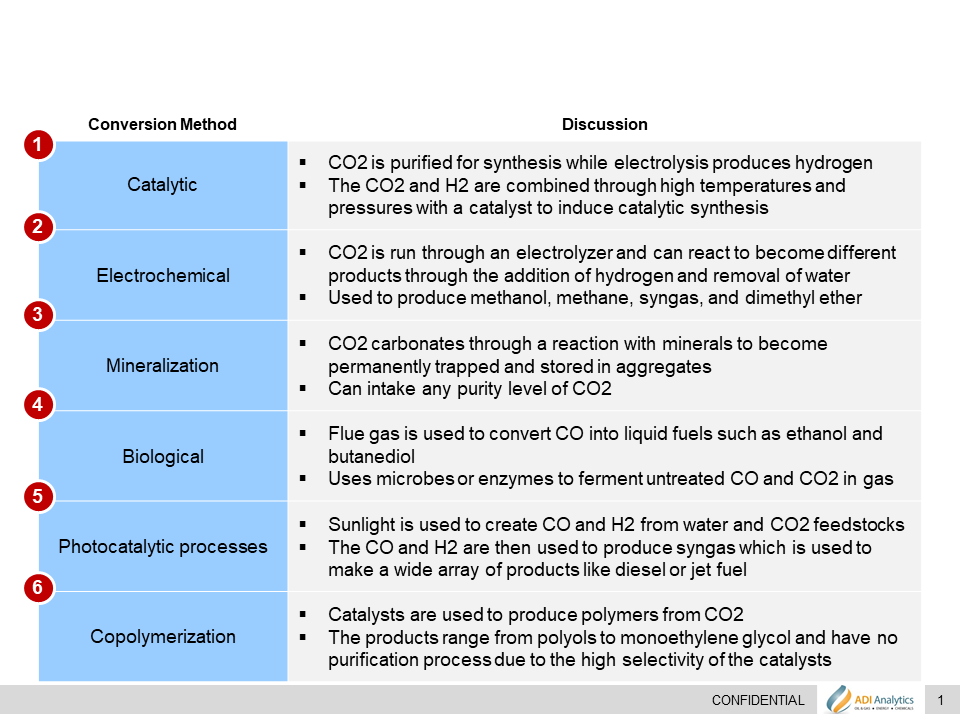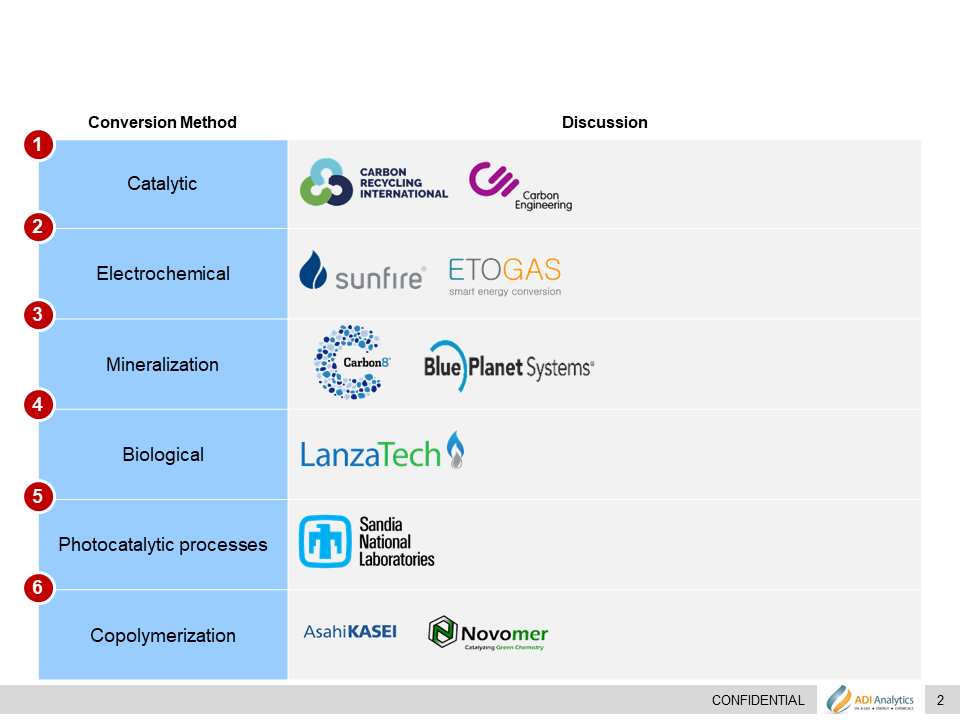
As energy transition is still a prevalent topic in today’s world, many are looking for alternative energy fuels and sources to mitigate greenhouse gas emissions. However, some are turning to look for solutions regarding the emissions themselves. Carbon capture has become an idea gaining major traction as companies and governments are beginning to heavily invest in these opportunities, but another question is being raised. Now that we are starting to capture carbon dioxide, what are we supposed to do with it? Today’s blog aims to look at the up-and-coming space of CO2 conversion, where we will identify new conversion methods being used to make carbon-neutral fuels, chemical products, and concretes.
When it comes to CO2 conversion, many start ups are starting to pop up with an interest in converting captured CO2 into synfuels and specialty chemicals. One method of converting CO2 is through catalytic conversion, where pure CO2 and hydrogen are synthesized by a catalyst under high pressure and temperature conditions to produce hydrocarbons. Copolymerization is a similar method specifically focused on using catalysts to develop polymers. Another method used includes electrochemical conversion, which uses an electrolyzer to take CO2 and combine it with produced hydrogen to make different platform molecules that can be used to make other synfuels and specialty chemicals.

Exhibit 1: CO2 conversion methods description

Exhibit 2: CO2 conversion companies by method
While many companies are turning to the methods as mentioned above, some companies are beginning to explore other conversion methods seen in Exhibit 1. For example, biological conversion is being tested by companies like Lanzatech as shown in Exhibit 2. This method includes capturing carbon monoxide from flue gas and converting it into different platform molecules through a fermentation process. Other processes like photocatalytic conversion are being studied by national laboratories such as Sandia National Laboratories. This method is a catalytic conversion process with special focus on solar heat and power.
While many of the methods above are great for creating carbon neutral products like synfuels and specialty chemicals, there is also a growing interest in using the same methods seen in CO2 sequestration techniques for products. Mineralization is a method used by companies like Carbon 8 and Blue Planet Systems to create construction aggregates through carbonating the materials with CO2 as a feedstock. This process traps the CO2 into the concrete products effectively removing it from the atmosphere. Because of this, Mineralization is seen as a carbon negative process as opposed to just carbon neutral like many of the other solutions.
As these conversion methods continue to mature, startups will develop new methods as the conversion space expands. The attractiveness of utilizing CO2 is growing both from and ESG and carbon credits standpoint. Finding solutions such as this are going to be key in the energy transition as we continue to move toward a greener world.
If you are interested in learning more about emerging markets driven by the energy transition, such as the CO2 conversion market, please contact us at ADI Analytics which has been researching and consulting in these areas for a wide range of clients.
-Thomas Dennis



















